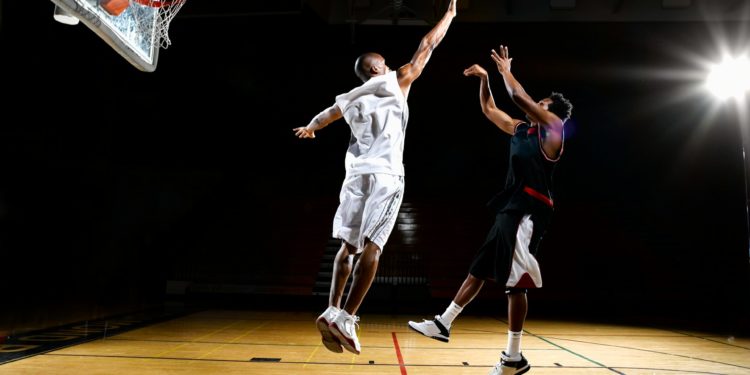Some of the most gripping parts of sports come with buzzer beaters. A player scores when the clock is out, and within a second, the game changes completely. But why can some players perform under such pressure while others fail? Players who shine during clutch situations possess a great deal of toughness accompanied by a unique mindset. Let’s take a look at the psychology behind iconic moments and what makes clutch performers differ from the rest.
Understanding the Pressure of the Final Seconds in Sports
There are few moments in sports that are as exciting as the last few seconds of a close game. The crowd is standing, the clock is ticking, the stakes are high, and so are the NBA betting odds, and it all depends on one moment. The moment is tough, yet players who make clutch plays tend to show how good they are at these moments.
In the NBA Finals in 2016, for instance, Kyrie Irving was able to hit the game-winning three-pointer during the 7th game of the finals. This effort was made after a defensive battle, and to top it all off, Irving displayed his capacity to hone in on the task in front of him while surrounded by immense pressure. Studies indicate that an athlete’s heart rate increases significantly during moments of high pressure, unlike in this case. With clutch performers, they know how to navigate and control their physiological reactions, allowing them to use the elevated situation to perform their best.
The Mental Traits That Define Clutch Players
During stressful and high-pressure situations, clutch players have something unique about them that allows them to be successful. Here are four characteristics that stand out.
- Confidence: Having faith in one’s ability to accomplish something means that a player can make quick decisions without thinking twice.
- Focus: The ability to nullify outside interference, such as noise from the crowd and the opposing team’s players, is very important.
- Resilience: Clutch players are able to quickly recover from the misses or errors they make during the game.
- Risk-Tolerance: They take large risks because they understand the benefits are more favorable than the losses.
Michael Jordan’s iconic buzzer-beater at the 1998 NBA Finals is a great example. He was known to be one of the most clutch athletes for a reason, and his focus and confidence during high-pressure situations only further ensured his legacy.
How Confidence and Composure Impact Performance Under Pressure
Self-belief and composure are the two main pillars in sustaining superior performance when it is needed the most. And this applies not only to athletes. For example, if you play an online casino game and are absolutely sure that you need to take a risk at a certain moment, you are more likely to succeed. After all, confidence is the backbone of winners! Players who are confident not only believe in themselves but can back up their skills, thereby boosting their teammates’ morale and weakening opponents.
Consider Damian Lillard’s infamous 37-foot shot against the Oklahoma City Thunder during the 2019 playoffs. His calmness before the shot was impressive. It spoke volumes of how composed he was and thus guaranteed success. Studies show that high self-confidence allows athletes to focus under pressure and perform since they perceive challenges as opportunities, not threats.
Self-control enables players to control their emotions. LeBron James, who has shone in big moments, states that he is successful due to his ability to remain relaxed during important situations. This capacity to manage stress allows for better cognition and decision-making when the game is at stake.
Neuroscience Behind Decision-Making in High-Stakes Moments
The brain is key in clutch conditions. Neuroscience shows that there are two primary components that are involved in high-pressure decision-making: the prefrontal cortex and the amygdala.
The prefrontal cortex is responsible for thinking and reasoning. Great performers in sports rely on their reasoning to make quick and calculated decisions. An example of this is Kawhi Leonard’s game-winning shot against the Philadelphia 76ers during the 2019 playoffs, which relied on predetermined accuracy and decision-making.
At the same time, the amygdala is tasked with managing the emotional components of the game. Players, during critical moments in the game, need to stave off feelings of fear and anxiety, which will end up distracting them. It has been shown that elite professional sports players have increased stress tolerance, letting their prefrontal cortex dominate during crucial plays. This equilibrium between emotions and logic is what defines clutch players.
Iconic Buzzer Beaters and the Psychology of the Players Behind Them
Some of the off-the-charts sporting buzzer beaters are the assertions of the mental toughness of clutch players. Let’s go through four unforgettable moments and examine the psychological factors that made them possible:
- Ray Allen’s Game-Tying Three (2013 NBA Finals): Allen’s concentration and preparation gave him the ability to make a season-saving shot for the Miami Heat.
- Kawhi Leonard’s Bounce Shot (2019 Playoffs): The pressure on Leonard during that shot was enormous, but his mental calmness allowed him to convert it perfectly.
- Derek Fisher’s 0.4 Second Shot (2004 Playoffs): Fisher excelled in one of the most demanding moments through his impulsive decision-making.
- Robert Horry’s Game-Winning Three (2002 Playoffs): The clutch legacy and confidence of Horry, also known as “Big Shot Bob,” distinguished him as a great, resilient performer.
These moments show the psychological readiness and toughness needed to perform under the greatest pressure.
Champions of the Moment: The Legacy of Clutch Performers
Buzzer beaters are not about skill alone. It’s also about dedication, unparalleled persistence, and belief. It is these moments that carve out careers and build legends. The science of clutch performing shows that being great is as much mental as it is physical. It is in the dying moments of a match, when the pressure is too much to bear, that clutch players emerge and write history while inspiring millions. It’s not a shot—it’s proof of the capabilities of the human brain!












































































